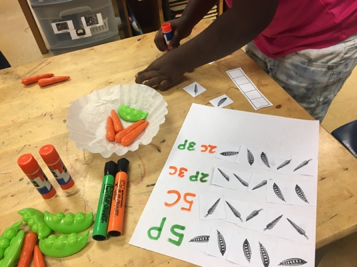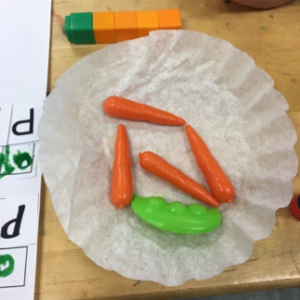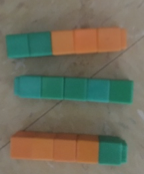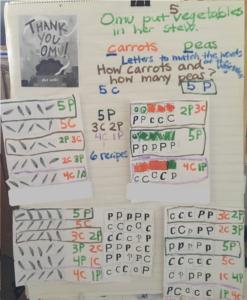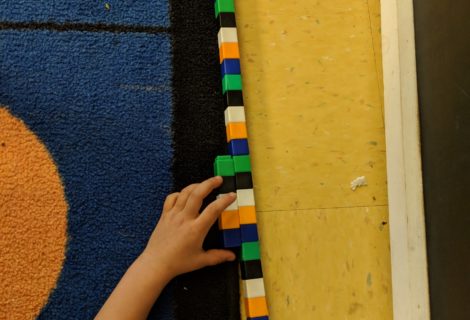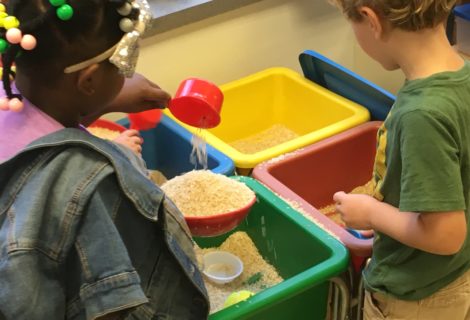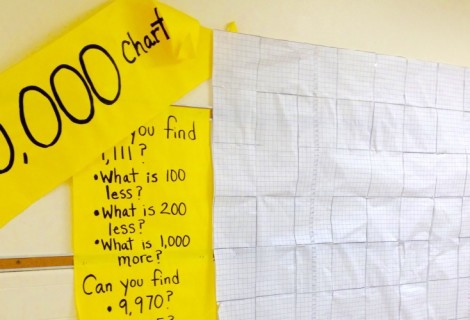Peas & Carrots: A New Twist to an Old Task
We have go-to math tasks – tasks that are open, include a visual component, and are mathematically rich with a low mathematical floor and a high mathematical ceiling (Boaler, 2016). These tasks are effective for introducing a new concept, for diving deeper into the concepts, procedures, representations, and vocabulary of a math concept, for transferring concepts and skills to a new context, and for engaging students in assessment by learning.
The Peas and Carrots task is one of our go-to math tasks: There are some number of vegetables on a plate. Some are peas and some are carrots. How many could be peas and how many could be carrots? Find all the combinations.
This is a Part-Part-Whole Relationship task where both addends are unknown. Students are typically ready to think about these types of problems in PreK and Kindergarten as they grow their understanding of the values of numbers and the meanings of addition, subtraction, and equality. (For more on problem types and developmental learning progressions, go to https://commoncoretools.files.wordpress.com/2011/05/ccss_progression_cc_oa_k5_2011_05_302.pdf.)
But how do we take this go-to math task and ensure that students find it truly problematic (Fosnot & Dolk, 2001)? How can we present the problem in a context that students find meaningful and important to solve? How can we present the problem in a context that positions all students as mathematically competent? This is often when we turn to children’s literature.
Selecting & Adjusting the Task
As part of the Virginia Reader’s Choice committee, Alisha reviews over 100 picture books each year. I told Alisha my PreK class would start reading variations of Stone Soup. I thought Stone Soup might be the right context to inspire the Peas and Carrots task and the folk tale would provide a common, familiar context for problem solving. But I could not find a variation with characters and settings that looked like my students and their lives. Alisha read Thank You, Omu! by Oge Mora and it was perfect. We read several variations and Thank You, Omu! was a hit. My students pretended to make their own soups and told their own versions of the now familiar folk tale. They were abuzz with talk about recipes and combining different ingredients during outdoor and indoor play to make soups, stews, pizzas, and cakes.
After much stew-inspired play, I posed our go-to math task within this now meaningful and important context: Omu put 5 vegetables in her stew. Some were carrots and some were peas. How many carrots and how many peas could she have used? Find all the possible recipes.
Contextualizing the task as a recipe for Omu helped to position every student as mathematically competent. To extend this competency into problem solving, I prepared a variety of materials from concrete to representational to abstract for teams of students to use:
- pretend peas and carrots
- cut-out pictures of peas and carrots
- green and orange cubes
- coffee filter “pots”
- five-frames
- green and orange markers
- cut-out letters P and C
Team Work
Each team chose their tools and worked collaboratively to find as many recipes as possible. They recorded their recipes using the tools, and in their recording processes, they transitioned from concrete representations to pictorial and abstract representations.
Sharing & Analyzing Our Work
We gathered again as a class to share our solutions and strategies. After everyone shared, we looked across our work and noticed: How many different recipes were possible? and What is the same about everyone’s work? We found six unique recipes and debated whether Omu would really use just carrots or just peas. We noticed everyone used letters to match the words for the vegetables (C for carrots and P for peas) and everyone used letters, numbers, and colors to keep track of recipes.
By placing our go-to math task within the context of recipes from Thank You, Omu!, students were able to engage in productive struggle as they made meaning of the value 5 and its many combinations. These PreK students saw themselves and their lives in the task, and therefore, they knew they could tackle the math ideas.
Looking for more go-to and rich math tasks? Check out:
- www.youcubed.org
- https://illuminations.nctm.org
- https://gfletchy.com/
- http://blog.mrmeyer.com/2011/the-three-acts-of-a-mathematical-story/
Keep reading our blog as we continue sharing about children’s literature, rich literacy and math tasks, and professional resources. And join us on Twitter: @MATHplusLIT and @BMEDemchak
Come see our presentations and workshops on early childhood mathematics and literacy!
We’ll be at VCTM in Richmond, VA on March 13-14, 2020 (http://www.vctm.org/event-3463966) talking about:
- Bansho: Sequencing Concrete-Representational-Abstract Strategies
- STEM Challenges in Early Childhood Classrooms
- Visible Learning in the Early Childhood Math Classroom
We’re presenting two all-day workshops:
- Using Five Processes to Gain Deep Mathematical Understanding, Grades PreK-3 in Charlottesville, VA through VaSCL on March 24, 2020. Register at vascl.org.
- Motivation in Mathematics: Using Student-Centered Learning for Math Achievement in Dedham, MA through Learning & the Brain on May 7, 2020. Register at learningandthebrain.com.
We’ll be at VSRA in Roanoke, VA on March 27, 2020 sharing about:
- You Gotta Read Bobcats Read! How One Elementary School’s Intentional Decision Making Impacted Classroom Instruction
